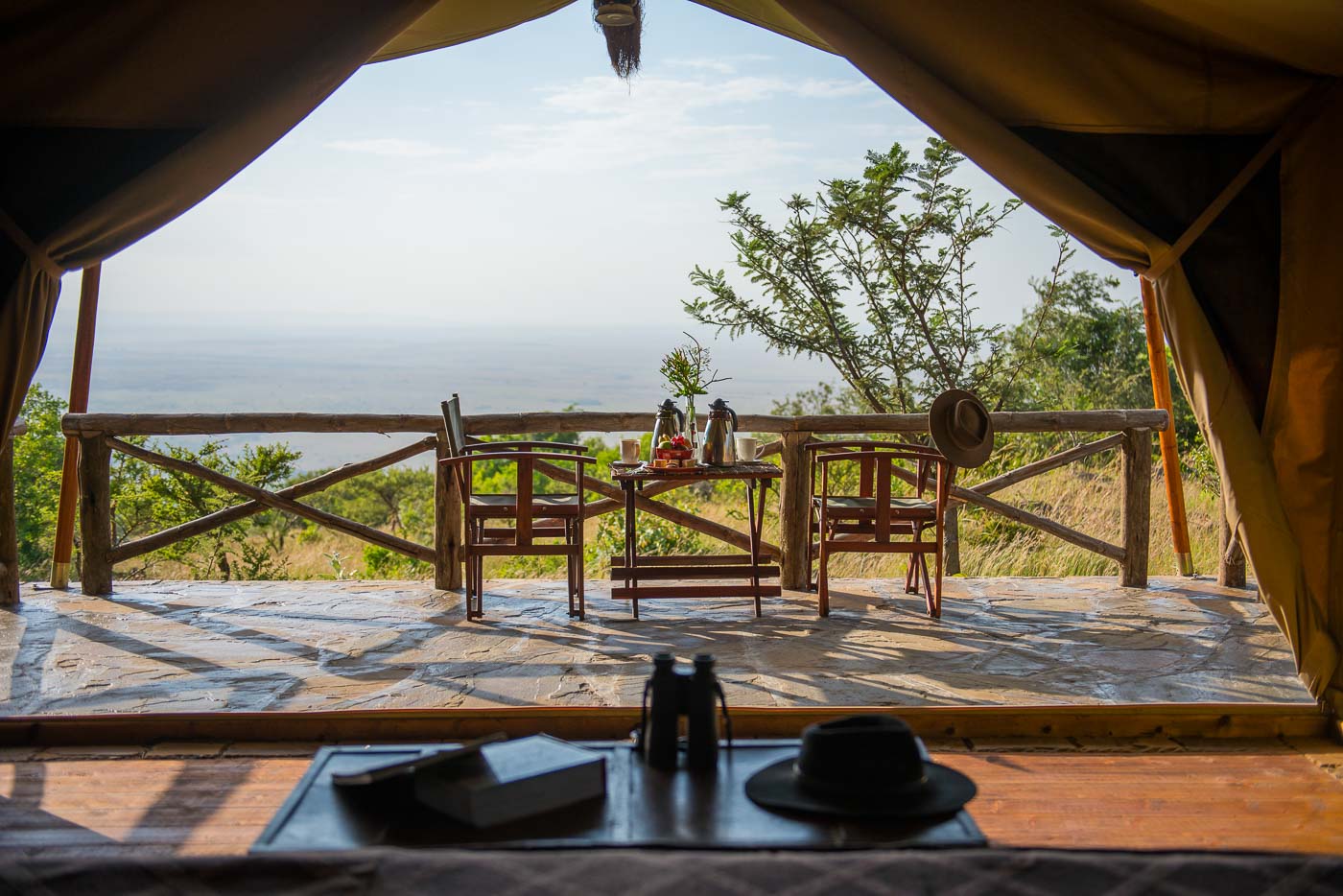If Kyoto was where Japanese nobility worked for over 1,000 years, Arashiyama is where they played. Thirty minutes out of the imperial city center and up the Oi-gawa river, shogun mansions and historic hot spring inns are perched on the cliffs and tucked into the red maple trees, including the ryokan Hoshinoya Kyoto. The inn’s history dates back to the Meiji period, but in 2009 Hoshinoya hotels updated the space to a new level of luxury. During our visit we were transported into a serene world where nobles play, artists dream, and couples revel in romance.

The Hoshinoya Kyoto experience begins at their boat house. They bring you inside for a cup of green tea and a red bean pastry, then the captain escorts you to the river boat for a beautiful 15-minute cruise to their sublime spot on the cliffs.

Hoshinoya Kyoto feels more like a series of homes than a hotel. The architecture maintains a low profile, letting the beauty of the surroundings take center stage. This rock garden mimics the currents of the river and fades out of sight like a waterfall.

Our suite was so chic with graphic wallpaper, a cloud-like bed, wall-to-wall window seats, and a bounty of unique amenities. In the closet we found their signature leisurewear, in the bar a huge selection of teas, and on the desk a beautiful Japanese calligraphy set to help channel our creativity in this inspiring space.

Then came one of the best meals of our two-year honeymoon. The flavors and presentation of this traditional kaiseki meal were like nothing we’d ever experienced! There were nine courses, one of the most decadent and exquisite being this cocktail of steamed abalone, topped with green apple, fresh sea urchin and caviar osetra.

Presentation in Japanese cuisine is not just how the food is plated but the beauty of the plate it is served on. Each course was served on hand-painted ceramics in varying artful designs. This course of red beans and rice in a charming fish-shaped bowl was off the menu but given to us and all newlyweds for good luck.

We went back to our room to find a honeymoon surprise of sparkling sake wine. The bed and bubbles looked all too inviting.

The next morning we woke up to the gentle sunlight streaming through our paper shutters and then the soft knock of the chef. He came bearing all the ingredients and cookware to prepare a hot pot breakfast was right in our suite!

So full from our bounty of food, we decided to take a walk to the neighboring hillside temple. The views over the river, the fiery red hills, and Kyoto city were spectacular.

The Hoshinoya ryokan experience is all about immersion in Japanese culture, inclusive not just of style and cuisine, but customs. They offer guests a number of classes so they can try their hand at Japanese arts, such as tea ceremonies and hand-made incense. Here is a look at our incense teacher, teaching us how to pack and sculpt ash into perfect mounds and position the sandalwood for long and fragrant burning.

Though Hoshinoya Kyoto feels a world away, just down stream are some incredible historic sites. The morning we checked out of our little oasis, we went to the heart of Arashiyama to see the UNESCO heritage site, Tenryuji Temple. It was originally a summer home to a retired shogun but has since become a zen temple and gardens.

Kyoto is one of the most spectacular cities in the world with over 2,000 temples, shrines, and historic buildings. We spent nearly one week exploring the imperial capital but found our appreciation for the dense city came to us once we arrived to Arashiyama, sailed up river, slipped into our robes, savored the cuisine, practiced the traditional arts and lived as the nobles did, even just for a few days.
Anne and Mike Howard are creators of the around-the-world honeymoon blog HoneyTrek.com and Long Term Travel Coaches for anyone looking to travel the world safely, affordably and off the beaten path. You can follow @HoneyTrek on Facebook, Instagram, and Twitter.
Mike and Anne Howard left on their honeymoon in 2012 and have been traveling the world ever since. HoneyTrek.com chronicles their adventures across 7 continents, 44 countries, and counting! Their writing, photography, and the story of the “World’s Longest Honeymoon” can also be found on Condé Nast Traveler, BBC Travel, The Knot, Los Angeles Times, CBS, and dozens of other international publications. Connect with @HoneyTrek on Facebook, Instagram, and Twitter.

















